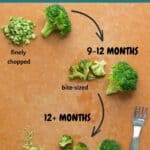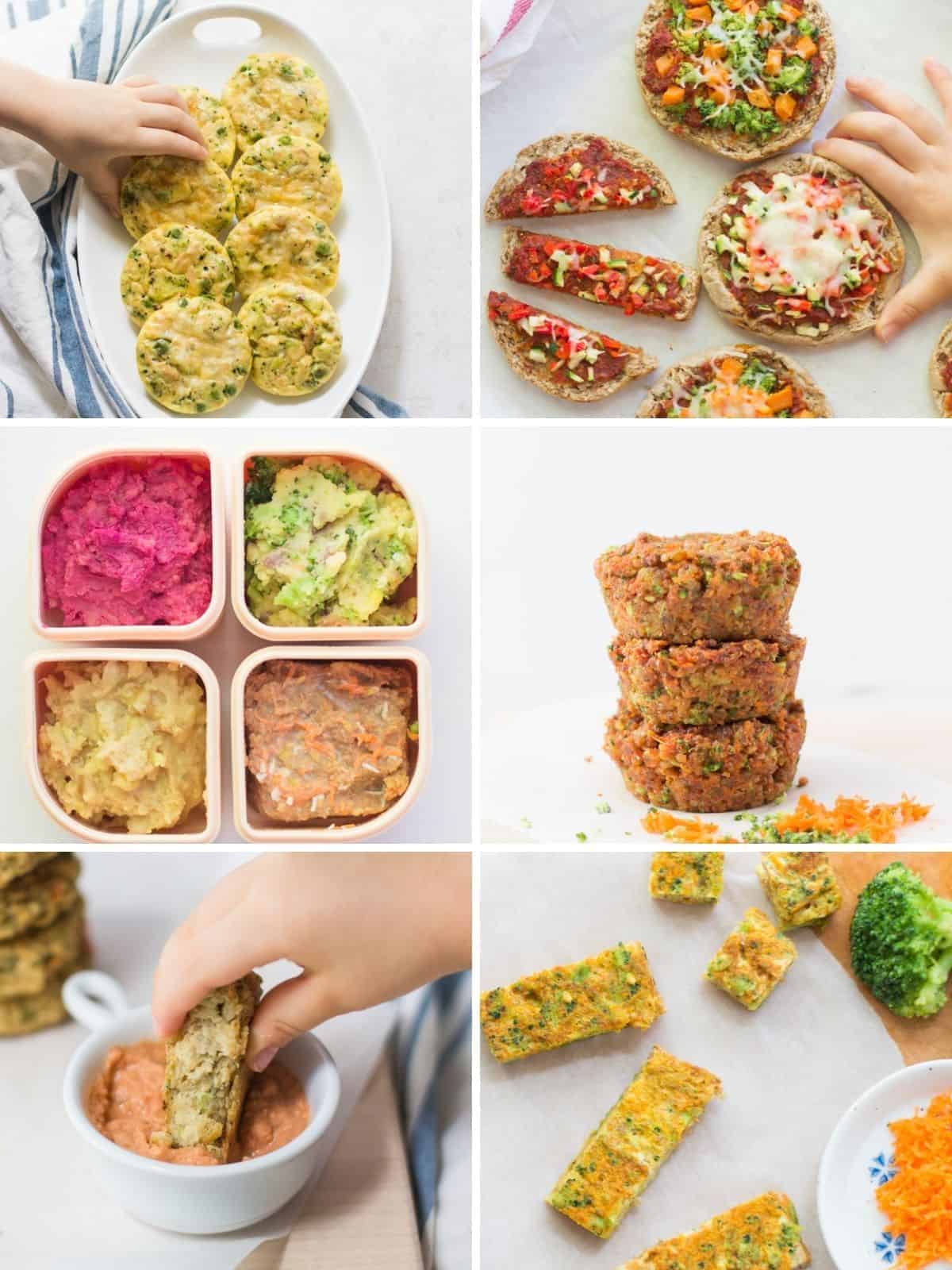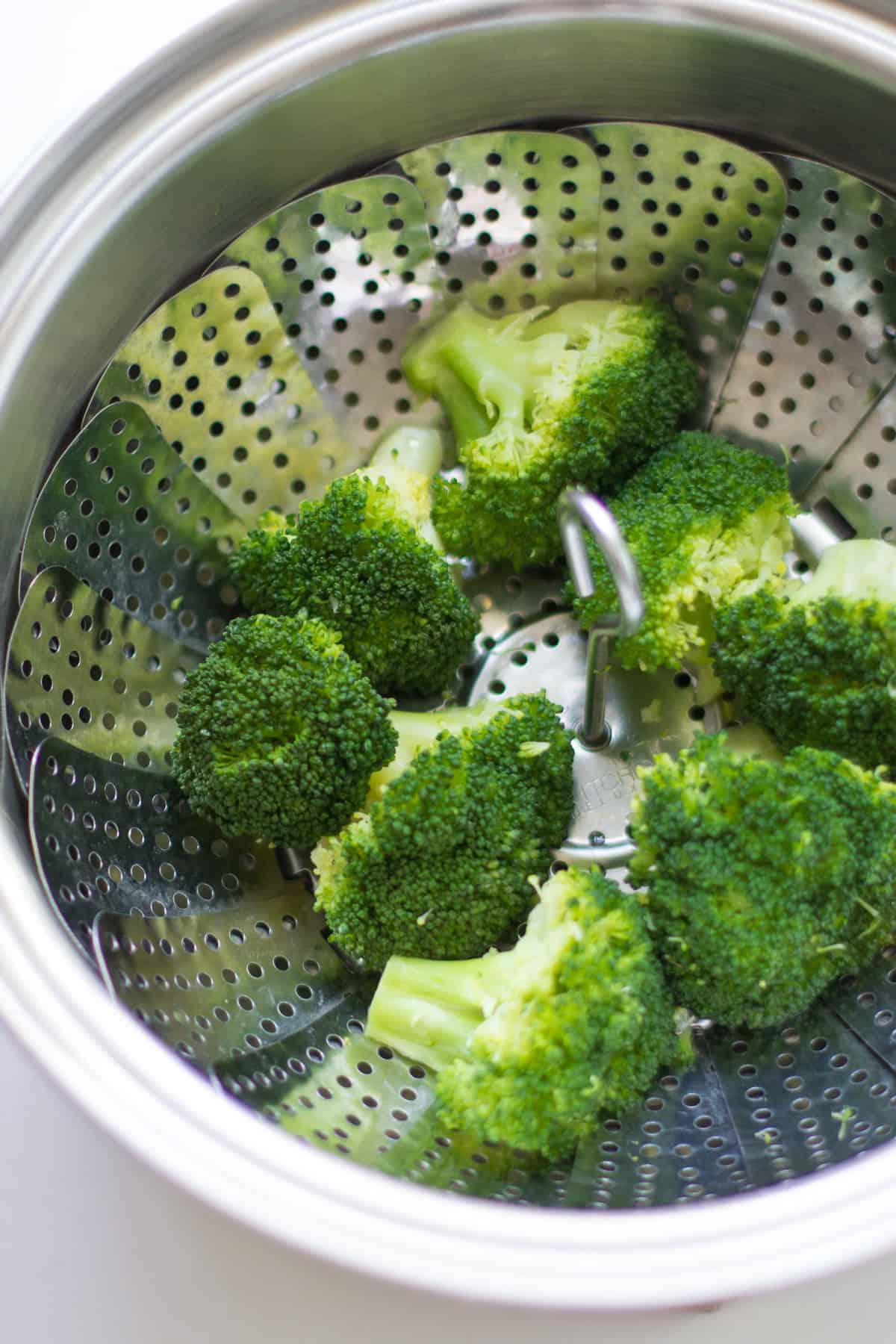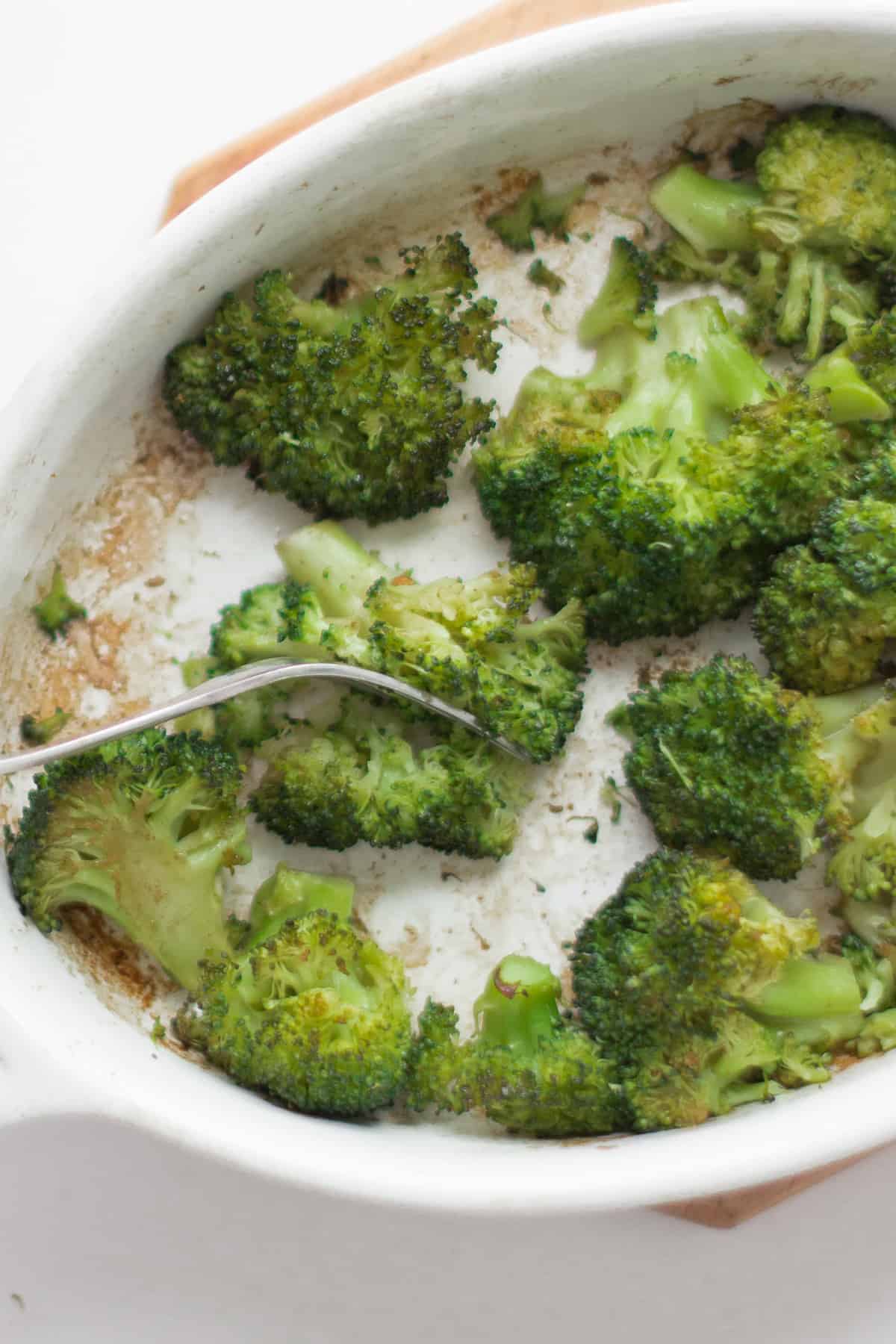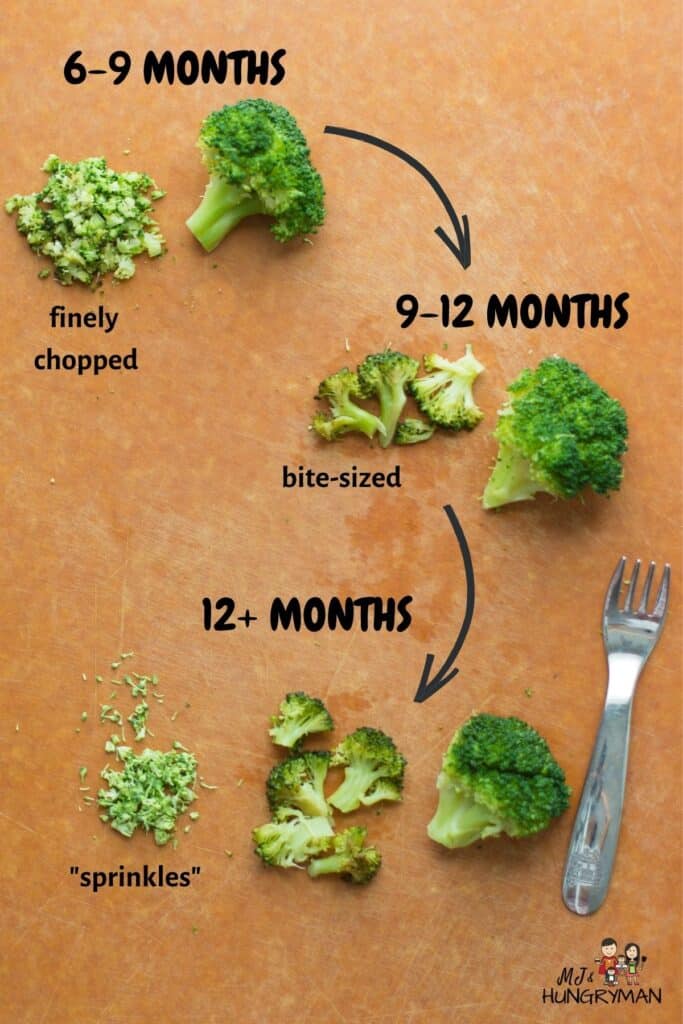When can babies eat broccoli?
This nutritious green vegetable can be offered to babies as soon as they’re ready to start solids, usually around 6 months. It’s important to remember that your baby is unique and that rather than going by the calendar, you need to make sure your baby is DEVELOPMENTALLY ready to start solids. If you’re unsure, be sure to grab my FREE handout!
Health benefits
Broccoli is bursting with vitamins and minerals, including vitamin C, K, A, as well as folate and potassium. It’s also rich in fiber and various antioxidants. It even contains a small amount of iron and zinc, top priority nutrients for babies. Related post: Best iron-rich foods for babies and toddlers I highly encourage you to introduce bitter flavored foods, early and often. Babies are born with an innate preference for sweet and salty flavors while disliking bitter and sour flavors. Research also shows that there is this a narrow “window of opportunity” when babies are most willing to accept new foods. Once your child enters toddlerhood and food neophobia enters the picture, they will only want to eat things that are familiar and safe to them. All this to say, bring on the broccoli (and kale, spinach, brussels sprouts, cabbage….)
Does broccoli make baby gassy?
Foods that are rich in fiber tend to cause gas. This list includes beans, cruciferous vegetables, oatmeal, prunes, peaches, and pears. Does this mean you should eliminate them completely? Absolutely not! These foods offer so many beneficial nutrients, necessary for your baby’s growth and development. And as mentioned above, early introduction to a wide variety of flavors and textures is key in minimizing picky eating down the road. If your baby is gassy but doesn’t seem to be in discomfort, there’s no reason to worry. If your baby is extra gassy after eating certain foods, just don’t overload them with those foods.
Cooking Methods
Here are the two best cooking methods for babies. It’s VERY important that the vegetable is cooked until soft enough to be easily smooshed between thumb and forefinger. You can use either fresh or frozen broccoli. I personally don’t recommend roasting for this age as the exterior of the vegetable can get too crispy or even burnt before it softens. You can boil, but I don’t recommend it as most of the nutrients will leach into the water.
Steam
Place water in a pot, add steamer basket, and bring to a boil. Add broccoli, cover, reduce heat to medium, and cook for 5-6 minutes. It should be easily pierce-able with a fork. Be careful not to overcook or you will end up with a not so appetizing greenish-yellow mush.
Steam Roast
This method is my personal favorite! If you are new to this cooking method, be prepared to fall in love HARD! So much more flavorful than plain steaming. How it works: The hot oven and moisture from the veggies create steam (once covered) making them soft, but because they’re roasted, the flavors become more concentrated. Simply add broccoli to a baking pan, toss with oil and seasoning(s) of choice, COVER, and roast at 425°F for 15-20 minutes! Perfectly soft and flavorful! Learn more about steam roasting as well as cooking times for ALL other vegetables
How to cut for baby led weaning
Related Post: how to serve the right food size and texture
For 6-8 months old:
Bigger is better and safer at this age so they can easily grab the food with their palm and bring to mouth. So welcome those giant florets ;). Try to leave as much of the floret stem as possible to make it easier for your baby.
9+ months old:
As your baby develops their pincer grasp and is able to pick up small pieces of food using their thumb and finger, you can cut into small, bite-sized pieces. I still suggest continuing to offer larger pieces so they can practice taking bites. This is a good time to introduce utensils. Your baby will most likely just play around or toss it. But it’s still great for exposure! Continue role modeling too.
12+ Months old:
Depending on your child’s chewing skills and your comfort level, you can start to offer slightly firmer, but still soft-textured foods. Try shortening the cooking time by several minutes and see how your baby does. Continue offering utensils and your child will likely surprise you one day! Also try adding raw broccoli “sprinkles!” Simply shave off the tips of the top with a knife or kitchen shears. Alternatively, you can pulse the raw florets in a food processor (I love using my manual mini food chopper) until finely chopped. Now add to oatmeal, yogurt, toast, etc!
Baby-Friendly Broccoli Recipes to try
I cook with this “mini tree,” as my son likes to call it, A LOT. It’s so affordable, nutritious, and versatile. It’s actually one vegetable that my firstborn had a really difficult time learning to enjoy so I came up with all kinds of ways to make it fun and appealing for him. Hope these recipes will be a hit with your child as well!
Dips/Baked Goods
Broccoli White Bean Pesto Broccoli hummus Vegan Vegetable Quinoa Muffins Baked Chickpea Veggie patties Salmon Quiche
Breakfast
Vegetable Baby French Toast Vegetable Baby Oatmeal Overnight Oats (or quinoa) Instant Pot Mashed Sweet Potatoes Lentils for Babies Savory Baked Oatmeal with Vegetables Tofu Veggie Scramble
Lunch/Dinner
One Pot Creamy Broccoli Pasta Instant Pot Peanut Chicken and Broccoli Mini Baked Canned Salmon Patties (egg-free) Pizza Quesadilla Healthy Korean Beef and Broccoli Quinoa English Muffin Baby Pizza Low-sodium Moo Goo Gai Pan
Did you make this recipe? Leave a rating below and let me know how you liked the recipe! Your feedback means so much to me!
